In the ever-evolving world of kitchen appliances, the commercial sandwich press has emerged as a staple in the foodservice industry. With the demand for convenience and quality on the rise, understanding the intricacies of this market, especially in regions like Europe and North America, is crucial for manufacturers and industry professionals alike. This article delves into the nuances of the commercial sandwich press market, highlighting the significance of NSF approval, key features of these presses, market dynamics, consumer preferences, and the challenges and opportunities facing manufacturers. By examining these aspects, we aim to provide a comprehensive overview of the industry and guide readers in making informed decisions.
Understanding the Commercial Sandwich Press Market in Europe and North America
The commercial sandwich press market in Europe and North America has seen a significant evolution, reflecting the dynamic nature of the foodservice industry. With a focus on efficiency, innovation, and health consciousness, this market has become a hub for top-of-the-line appliances that cater to a variety of establishments, from quick-service restaurants to upscale cafes.
In Europe, the demand for commercial sandwich presses is driven by the region’s love for sandwiches and the increasing popularity of fast-casual dining. The continent’s diverse culinary landscapes have also led to a preference for a wide range of sandwich styles, from classic ham and cheese to gourmet fusion options. As a result, the market has seen a surge in the need for versatile and durable sandwich presses that can handle high-volume production while maintaining quality.
On the other side of the Atlantic, North America has its own unique trends. The United States, in particular, has witnessed a growing interest in healthier eating habits, which has spurred the demand for sandwich presses that can accommodate various health-conscious ingredients like whole-grain breads, lean proteins, and fresh vegetables. The rise of food trucks and street food culture has also contributed to the popularity of portable and easy-to-use sandwich presses.
One of the key factors shaping the commercial sandwich press market in both regions is the emphasis on food safety and hygiene. With the increasing number of foodborne illness outbreaks, restaurants and cafes are under greater pressure to ensure that their equipment meets the highest standards. This has led to a rise in the adoption of NSF (National Sanitation Foundation) approved commercial sandwich presses, which are recognized for their adherence to stringent health and safety protocols.
The European market is particularly sensitive to energy efficiency and sustainability. As such, sandwich presses that are not only effective but also eco-friendly are gaining traction. Manufacturers are responding by producing appliances that consume less energy and are made from recyclable materials, aligning with the green initiatives of many European businesses.
In North America, innovation is often at the forefront of the commercial sandwich press market. Technological advancements such as programmable settings, adjustable heat controls, and non-stick surfaces have become standard features, offering operators the flexibility to create a wide array of sandwiches with minimal effort and mess. The market is also seeing an increase in smart appliances that can be remotely controlled or monitored, which is particularly appealing to busy operators looking to streamline their workflows.
The competitive landscape in both Europe and North America is marked by a number of well-established players, each bringing their own unique strengths to the table. Some are known for their rugged, industrial-grade presses, while others focus on high-end models with advanced features. The presence of these brands has led to a competitive pricing environment, where value and quality are key differentiators.
Despite the growth, the commercial sandwich press market in Europe and North America is not without its challenges. One of the main hurdles is the need for continuous innovation to meet the changing demands of consumers and operators. Additionally, the economic downturns and fluctuations can impact the overall market demand, as businesses may prioritize cost-saving measures over investing in new equipment.
Looking ahead, the commercial sandwich press market is poised for continued growth, especially as the demand for convenience and quality continues to rise. The integration of technology into these appliances is expected to play a significant role in this growth, with features such as integrated payment systems, social media connectivity, and even customization options becoming more common.
In conclusion, the commercial sandwich press market in Europe and North America is a complex and evolving sector that requires a keen understanding of consumer trends, health and safety regulations, and technological advancements. As the industry continues to adapt and innovate, the demand for high-quality, NSF approved commercial sandwich presses is likely to remain robust, ensuring that operators can meet the needs of their customers with ease and efficiency.
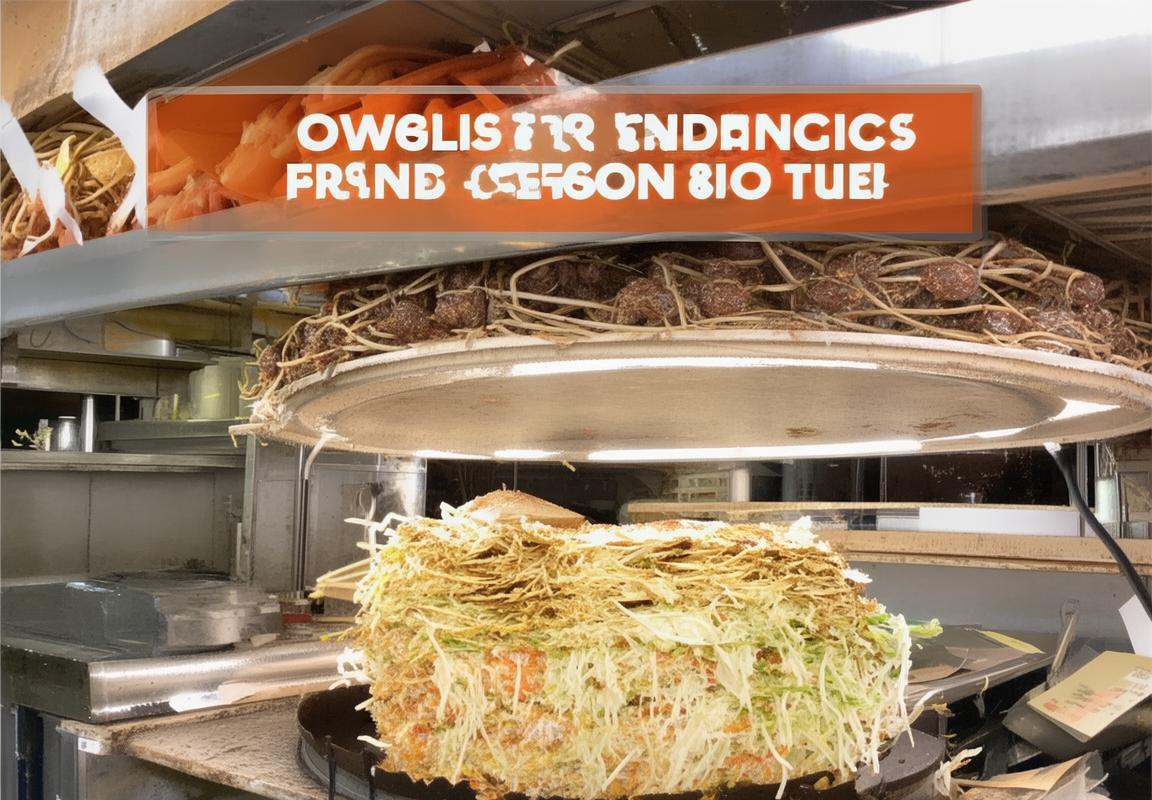
What Makes NSF Approval a Game-Changer?
NSF approval for commercial sandwich presses marks a significant milestone for manufacturers and consumers alike. This stamp of approval signifies more than just compliance with standards; it’s a testament to the highest levels of quality, safety, and performance. Here’s what makes NSF approval a game-changer in the commercial sandwich press market:
-
Enhanced Consumer Confidence: With NSF certification, consumers can trust that the commercial sandwich presses they use are not only designed to deliver high-quality sandwiches but also to prioritize their health and safety. This trust is crucial in an industry where food safety is paramount.
-
Stringent Testing Procedures: To earn NSF approval, sandwich presses must undergo rigorous testing for material safety, structural integrity, and performance. This thorough vetting process ensures that only the most reliable and durable appliances make it to market.
-
Safety Standards Compliance: NSF certification ensures that the sandwich presses meet or exceed the latest safety standards set by regulatory bodies. This includes electrical safety, fire resistance, and the absence of harmful chemicals that could leach into the food.
-
Sanitation and Cleanability: In the foodservice industry, maintaining a clean and hygienic environment is essential. NSF-approved sandwich presses are designed with sanitation in mind, featuring non-stick surfaces, easy-to-clean components, and materials that resist bacteria growth.
-
Consistent Performance: The approval process also evaluates the consistency of the sandwich presses’ performance. This means that operators can rely on these appliances to consistently deliver the same quality of product, day in and day out.
-
Longevity and Reliability: Sandwich presses with NSF certification are built to last. The rigorous testing process ensures that these appliances are not only safe to use but also durable, reducing downtime and the need for frequent repairs or replacements.
-
Energy Efficiency: In an era where sustainability is a key concern, NSF-approved sandwich presses often come with energy-efficient features. This not only saves on operational costs but also reduces the environmental impact of the foodservice industry.
-
Marketability: For manufacturers, NSF approval is a powerful marketing tool. It sets their products apart from competitors and signals to potential buyers that the appliance has been vetted by a respected third-party organization.
-
Regulatory Compliance: For businesses operating in regulated markets, NSF certification is often a requirement. It ensures that sandwich presses are compliant with local, regional, and national health and safety regulations.
-
International Recognition: NSF is recognized worldwide as a leader in public health and safety. Products with NSF approval can easily be exported to international markets, where the NSF mark is also well-respected.
-
Continuous Improvement: NSF certification is not a one-time achievement; it requires ongoing compliance with standards. This means that manufacturers must continually improve their products to maintain certification, ensuring that the sandwich presses on the market are always up to date with the latest technology and safety advancements.
-
Innovation and Leadership: The pursuit of NSF approval often drives manufacturers to innovate. It encourages them to develop new features and technologies that can enhance the performance, safety, and user experience of their sandwich presses.
By achieving NSF approval, manufacturers are essentially making a commitment to excellence in the commercial sandwich press market. This commitment is reflected in every aspect of the product, from design to after-sales service, and it’s what makes NSF approval such a game-changer for both manufacturers and end-users.
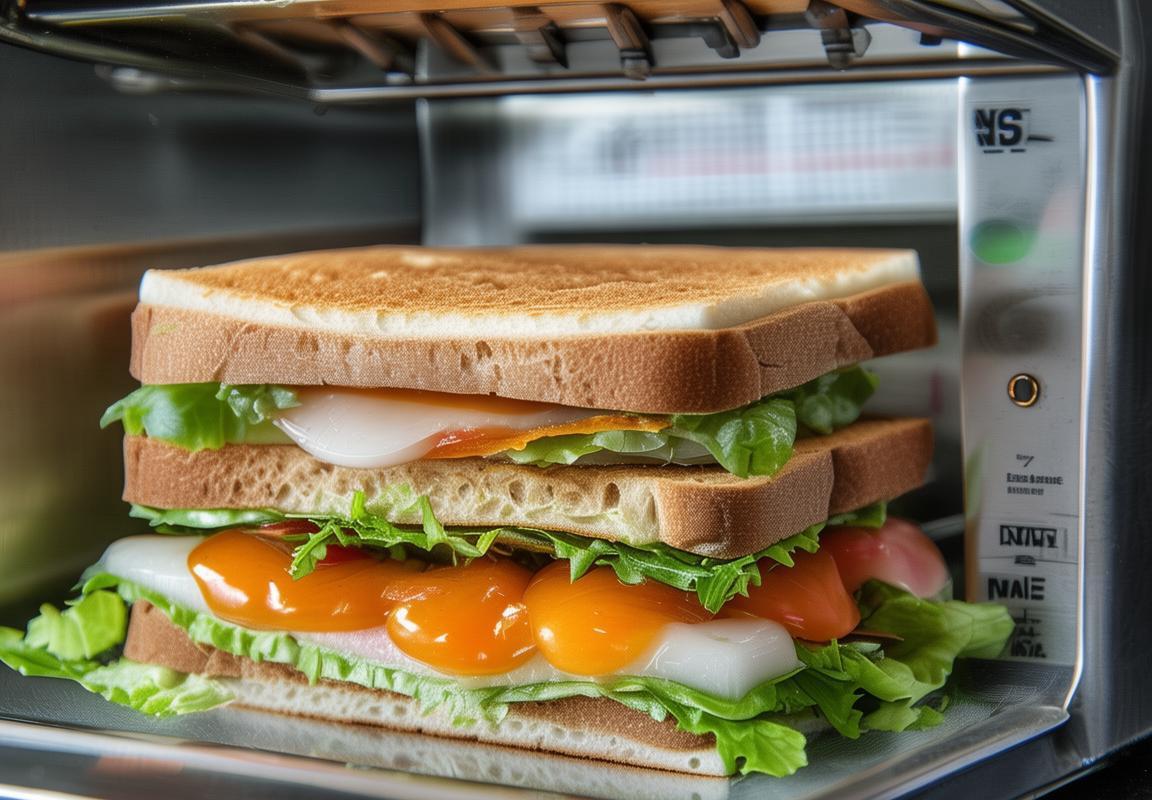
Key Features of NSF Approved Commercial Sandwich Presses
NSF-approved commercial sandwich presses stand out in the market due to a variety of key features that ensure quality, safety, and efficiency. Here’s a closer look at what sets these presses apart:
-
High-Quality Materials: These presses are crafted from durable materials that can withstand the rigors of commercial use. Stainless steel is a common choice for its resistance to corrosion and heat, ensuring longevity and maintaining hygiene standards.
-
Even Heat Distribution: One of the most crucial features of a sandwich press is even heat distribution. NSF-approved models are designed with precise heating elements that ensure every sandwich is cooked to perfection, with a consistent color and texture.
-
Temperature Control: Accurate temperature control is essential for achieving the desired outcome. These presses often come with adjustable temperature settings, allowing operators to fine-tune the heat to match the specific requirements of different types of sandwiches.
-
Safety Locks and Interlocks: Safety is paramount in commercial kitchens. NSF-approved sandwich presses are equipped with safety locks and interlocks that prevent the press from operating unless it is properly closed and locked, reducing the risk of accidents.
-
Easy Cleaning and Maintenance: Commercial kitchens are busy environments, and cleaning is a critical aspect of maintaining hygiene. NSF-approved presses are designed with easy-to-clean surfaces and removable parts, making them simpler to maintain and sanitize.
-
Non-Stick Coating: To further aid in cleaning and to prevent food from sticking to the surfaces, many NSF-approved sandwich presses are coated with a non-stick material that ensures sandwiches release smoothly and reduces the need for excessive cleaning.
-
Large Capacity: Commercial operations often require high-volume output. These presses are available in various sizes, from compact models suitable for smaller establishments to larger, industrial-grade presses that can handle high production demands.
-
Energy Efficiency: With rising energy costs, energy efficiency is a significant consideration. NSF-approved sandwich presses are designed to be energy-efficient, reducing operational costs and minimizing the environmental impact.
-
User-Friendly Design: The design of these presses is not just about functionality; it’s also about ease of use. Features like intuitive controls, clear displays, and ergonomic handles make operation straightforward and less stressful for staff.
-
Certification and Compliance: The NSF certification itself is a testament to the quality and safety of the product. It ensures that the sandwich press meets stringent health and safety standards, giving operators peace of mind that they are using a reliable and compliant piece of equipment.
-
Warranty and Support: Knowing that a product is backed by a strong warranty and excellent customer support can be reassuring. NSF-approved sandwich presses often come with comprehensive warranties and access to knowledgeable technical support.
-
Customization Options: Some models offer customization options, allowing businesses to tailor the press to their specific needs. This could include branding, additional features, or modifications to fit unique kitchen layouts.
-
Durability and Reliability: The longevity of the equipment is a key feature. NSF-approved sandwich presses are built to last, with robust construction that can handle the demands of a busy kitchen environment.
-
Innovative Features: As technology advances, so do the features of commercial sandwich presses. Some models now come with innovative features like programmable settings, digital temperature readouts, and even smart connectivity for remote monitoring and control.
-
Compliance with International Standards: For businesses operating in multiple countries, NSF-approved sandwich presses often meet international standards, making them a versatile choice for global operations.
These key features make NSF-approved commercial sandwich presses a standout choice for any establishment looking to elevate their sandwich-making capabilities, ensuring both quality and safety in every bite.
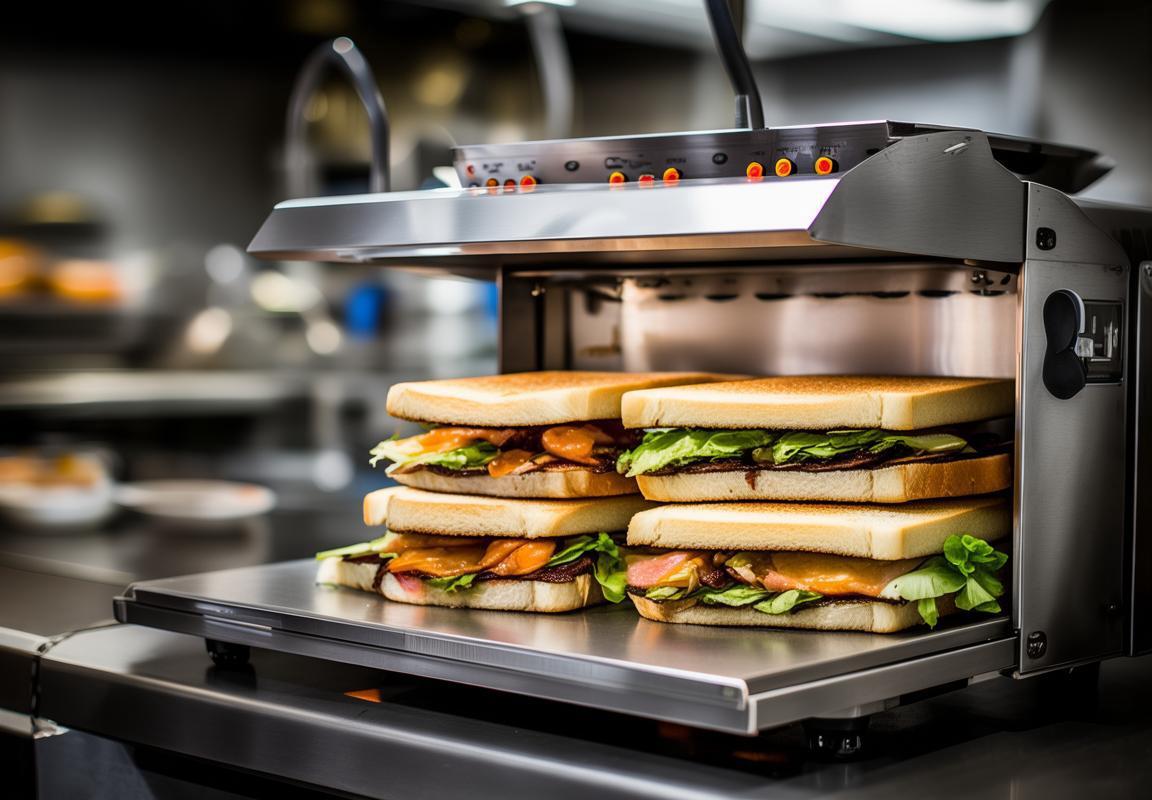
Market Dynamics: Trends and Growth Projections
The commercial sandwich press market in Europe and North America is experiencing a surge in demand, driven by evolving consumer preferences and the need for efficient foodservice solutions. Here’s a closer look at the current market dynamics, trends, and growth projections.
The rise of fast-casual dining has significantly impacted the commercial sandwich press market. As consumers seek quick, yet high-quality meals, these presses have become a staple in many quick-service restaurants (QSRs) and cafes. The convenience of these appliances, coupled with their ability to produce consistent, appealing sandwiches, has solidified their position in the industry.
One of the key trends observed in the market is the emphasis on health and wellness. As more people become conscious of their dietary choices, there’s been a noticeable shift towards healthier sandwich options. This has led to an increase in demand for sandwich presses that can handle whole-grain breads, lean proteins, and fresh vegetables, ensuring that operators can cater to these nutritional preferences.
Technology has also played a pivotal role in shaping the market. Modern commercial sandwich presses often come equipped with features like digital temperature control, which allows operators to precisely regulate the cooking process. This not only ensures the quality of the sandwiches but also enhances the efficiency of the kitchen staff.
Another trend is the rise of customization. Customers today expect a personalized dining experience, and sandwich presses have evolved to accommodate this demand. Many models now offer variable pressure settings and adjustable heating elements, allowing for a wide range of sandwich styles and flavors.
In terms of growth projections, the commercial sandwich press market is expected to see robust expansion over the next few years. According to market research, the demand for these appliances is anticipated to grow at a compound annual growth rate (CAGR) of around 5% between 2021 and 2026. This upward trajectory can be attributed to several factors.
Firstly, the increasing urbanization in both Europe and North America is leading to a greater concentration of people in cities, which in turn drives the need for quick and convenient food options. As urban populations grow, so does the demand for commercial sandwich presses in foodservice establishments.
Secondly, the rise of mobile and online food ordering platforms has made it easier for customers to access a variety of sandwich options, further fueling market growth. These platforms often feature a wide array of restaurants and their offerings, including those that specialize in sandwiches made with commercial sandwich presses.
Furthermore, the emphasis on sustainability and eco-friendly practices is prompting foodservice operators to invest in energy-efficient appliances. Commercial sandwich presses that consume less energy and have a longer lifespan are becoming more attractive to businesses looking to reduce their environmental footprint and operating costs.
The market is also witnessing the entry of new players, as well as the expansion of existing brands. This competition is driving innovation and leading to the development of more advanced, user-friendly sandwich presses. As these new products hit the market, they are likely to attract a broader customer base and contribute to the overall growth of the commercial sandwich press sector.
In conclusion, the commercial sandwich press market in Europe and North America is characterized by a strong trend towards health, customization, and technological innovation. With a projected growth rate that reflects a healthy market dynamic, it’s clear that these appliances will continue to play a vital role in the foodservice industry. As consumer demands evolve and new technologies emerge, the market is poised to expand further, offering exciting opportunities for both manufacturers and operators.
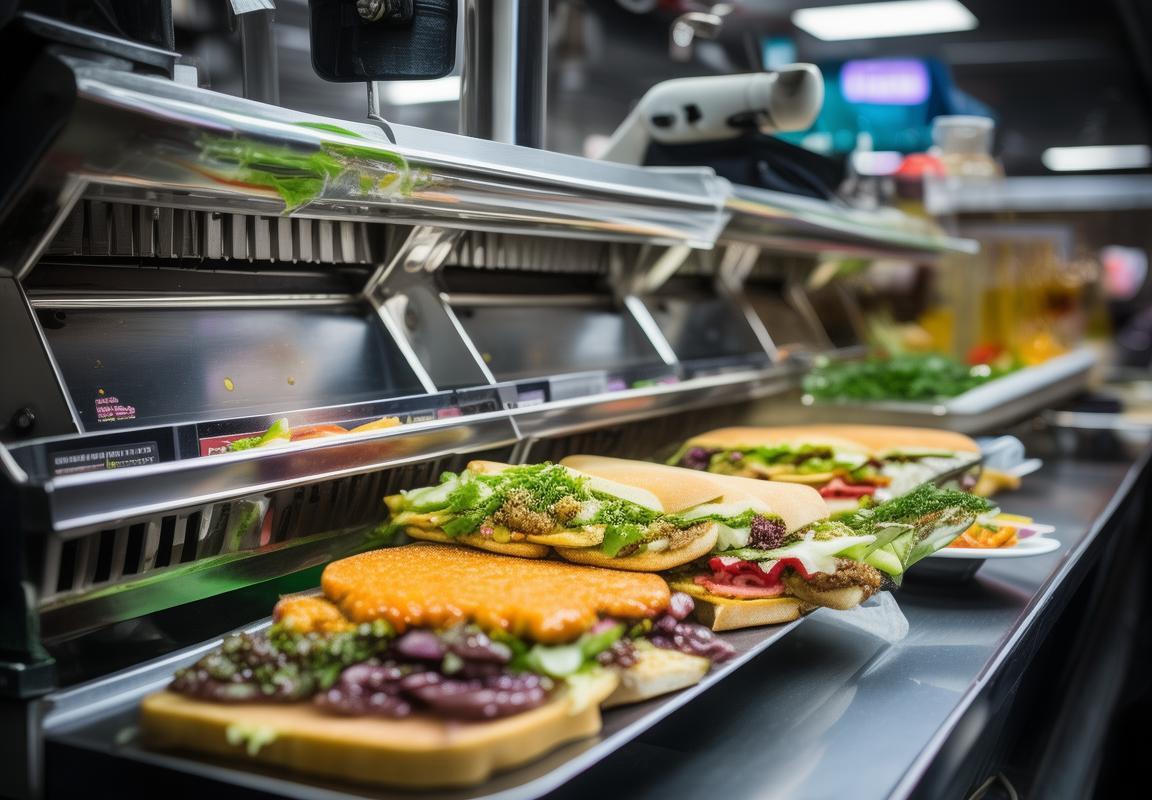
Why Choose NSF Certified Equipment?
NSF certification is not just a label; it’s a seal of approval that speaks volumes about the quality and safety of a product. Here’s why choosing NSF certified equipment is a smart decision for any business, especially in the commercial kitchen industry:
In the bustling world of commercial kitchens, where cleanliness and efficiency are paramount, NSF certification stands out as a beacon of trust. It signifies that the equipment has been rigorously tested and meets stringent standards for health, safety, and environmental sustainability.
The health and safety of consumers are at the forefront of any foodservice operation. NSF certified equipment is designed to minimize the risk of contamination, ensuring that the food prepared is safe for consumption. This peace of mind is invaluable, as it helps protect your brand reputation and customer loyalty.
For businesses operating in regulated environments, compliance with health codes is non-negotiable. NSF certification is recognized by regulatory bodies worldwide, making it easier for businesses to meet these requirements without the need for additional testing or verification.
In an industry where innovation is key to staying competitive, NSF certified equipment often incorporates the latest technological advancements. These innovations not only improve performance but also contribute to energy efficiency and cost savings, which are critical factors for long-term sustainability.
The cost of downtime in a commercial kitchen can be substantial. NSF certified equipment is known for its durability and reliability, reducing the likelihood of breakdowns and maintenance issues. This means fewer disruptions to your operations and a more consistent workflow.
Customers today are more informed than ever before. They are increasingly seeking out businesses that prioritize sustainability and ethical practices. NSF certification is a tangible way to demonstrate your commitment to these values, which can be a significant differentiator in a crowded marketplace.
In the realm of certifications, NSF is recognized as a leader in public health and safety. This recognition enhances your credibility with suppliers, partners, and customers alike. It’s a mark that signifies you’re serious about quality and are invested in the well-being of your customers and employees.
The competitive landscape of the commercial kitchen industry is evolving. Companies that adopt NSF certified equipment are often seen as industry leaders, which can attract top talent and partners. It’s a strategic move that can give you a competitive edge in attracting and retaining the best professionals in your field.
For those looking to expand their market reach, NSF certification is a global standard. This means that if you’re planning to export your products or services, NSF certification can help you navigate the complexities of international regulations and standards, ensuring a smoother entry into new markets.
The longevity of your business is tied to the quality of the equipment you invest in. NSF certified equipment is designed to last, which means you’re making a smart investment that can pay off for years to come. It’s an investment in the future of your business, one that’s built on the foundation of reliability and performance.
In a world where data breaches and security concerns are on the rise, the integrity of your products and processes is under scrutiny. NSF certification is a way to ensure that your equipment is not only safe but also secure, protecting your business from potential liabilities.
The journey to NSF certification is a testament to a company’s dedication to excellence. It’s a process that involves continuous improvement and a commitment to quality. By choosing NSF certified equipment, you’re aligning yourself with a brand that stands for these principles, reinforcing your own commitment to high standards.
As the demand for high-quality, safe food continues to grow, businesses that prioritize NSF certification are positioning themselves to meet these demands. It’s a strategic choice that can lead to increased customer satisfaction, regulatory compliance, and a competitive advantage in the marketplace.
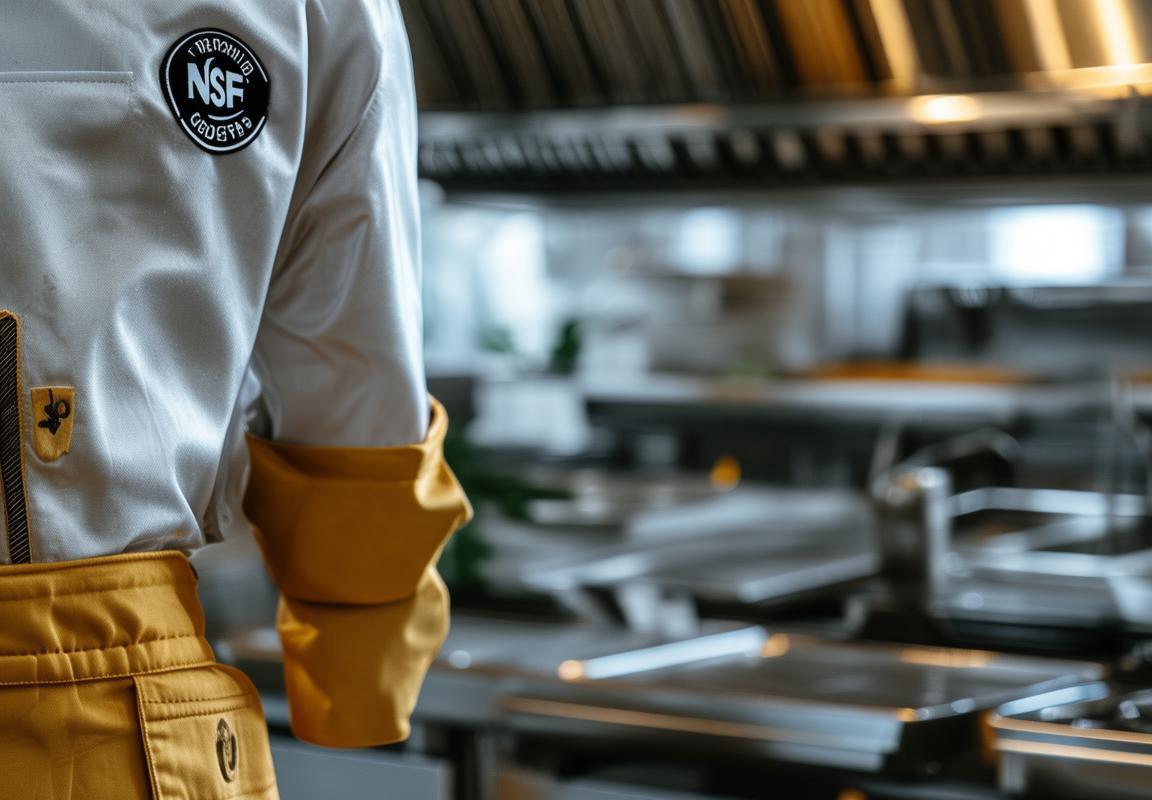
Case Studies: Successful Implementations in the Industry
In the bustling world of commercial kitchens, the integration of high-quality equipment is crucial for both efficiency and safety. Let’s delve into some compelling case studies that showcase successful implementations of NSF-certified equipment in various industries.
-
Hospitality Sector Success Story: A renowned hotel chain replaced their outdated sandwich presses with NSF-approved models. This upgrade not only improved the consistency of their sandwiches but also ensured compliance with health and safety standards. The new presses, designed with non-stick surfaces and easy-to-clean features, have significantly reduced maintenance time and increased staff satisfaction.
-
Fast-Casual Restaurant Transformation: A fast-casual restaurant known for its made-to-order sandwiches and wraps decided to invest in a line of NSF-certified sandwich presses. The result was a noticeable increase in customer satisfaction due to the even cooking and better taste of the sandwiches. The presses also featured innovative safety features that minimized the risk of burns for both staff and customers.
-
Catering Company Efficiency: A catering company that services corporate events and private parties found that their sandwich orders were frequently delayed due to inconsistent cooking times. By switching to NSF-approved sandwich presses, they were able to streamline their process, ensuring that every sandwich was cooked to perfection within a set timeframe. This efficiency boost allowed them to take on more orders without compromising on quality.
-
School Lunch Program Success: A school district struggling with a lack of uniformity in their lunch program turned to NSF-certified sandwich presses. The presses were installed in school cafeterias, and the results were immediate. The improved cooking consistency led to happier students, with a reduction in complaints about cold or overcooked sandwiches. The easy-to-use controls also helped staff members of varying skill levels achieve the same high-quality results.
-
Healthcare Facility Hygiene: A hospital’s cafeteria faced challenges with maintaining hygiene standards in their sandwich preparation. The introduction of NSF-certified sandwich presses, which are designed with stainless steel components and easy-to-disassemble parts, has drastically improved cleanliness. The hospital has seen a decrease in the number of foodborne illnesses reported among staff and patients.
-
Gourmet Sandwich Shop Quality Assurance: A gourmet sandwich shop known for its artisanal offerings sought to elevate their production process. By investing in NSF-certified sandwich presses, they were able to ensure that every sandwich was cooked to the highest standard. The precise temperature control and even heat distribution helped maintain the integrity of their gourmet fillings, enhancing the overall dining experience.
-
Coffee Shop Integration: A popular coffee shop that offers a variety of sandwiches alongside their coffee and pastries found that their customers were increasingly looking for a meal that complemented their beverages. By incorporating an NSF-certified sandwich press into their menu, they were able to offer a fresh, hot option that met the demand for a quick, satisfying meal. The press’s ability to handle a variety of bread types and fillings expanded their menu options without adding complexity to their kitchen operations.
-
Mobile Catering Service Expansion: A mobile catering service that often operates in outdoor settings required a reliable and durable sandwich press. The NSF-certified option they chose was lightweight yet robust, capable of withstanding the rigors of portable use. This investment allowed the service to expand their offerings and cater to events with greater confidence in their ability to provide quality sandwiches regardless of the location.
These case studies highlight the versatility and value of NSF-certified sandwich presses across different sectors. From hospitality to healthcare, the consistent performance and adherence to safety standards have proven to be a game-changer for businesses looking to enhance their operations and customer satisfaction.
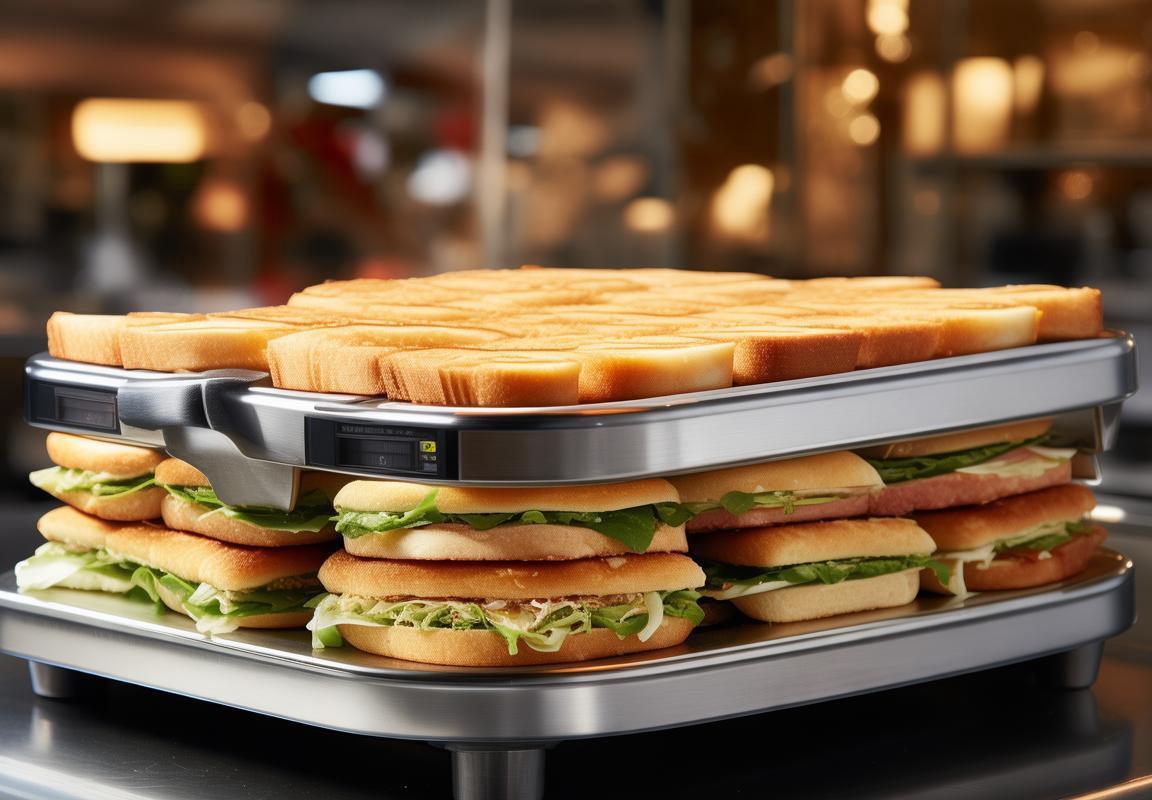
Innovations in Commercial Sandwich Press Technology
In the fast-paced world of commercial foodservice, innovations in sandwich press technology have revolutionized the way restaurants, delis, and food trucks prepare their menu items. Here’s a closer look at some of the latest advancements:
The integration of smart technology has become a hallmark of modern commercial sandwich presses. These devices are now equipped with digital controls that allow operators to precisely set cooking times and temperatures. This not only ensures consistent results but also saves time and reduces energy consumption.
One significant innovation is the inclusion of non-stick surfaces that require less oil and offer easier cleanup. This not only improves the hygiene standards in commercial kitchens but also reduces the costs associated with maintenance and cleaning products.
Some sandwich presses are designed with a split design, allowing for the even distribution of heat and pressure. This ensures that each sandwich is cooked to perfection on both sides, eliminating the risk of undercooked or overcooked bread. The split design also simplifies the process of flipping and removing the sandwiches, streamlining the workflow.
The evolution of heating elements has brought about more efficient sandwich presses. These modern units often feature ceramic or halogen heating elements, which provide a quicker and more uniform heat distribution. This rapid heat-up time is particularly beneficial during peak business hours when speed is of the essence.
The development of programmable interfaces has made sandwich presses even more user-friendly. Operators can save their preferred settings for different types of sandwiches, making it easier to switch between menu items without wasting time adjusting the controls each time.
Another innovation is the introduction of adjustable pressure systems. This feature allows for the customization of the cooking pressure based on the type of bread and the desired texture of the sandwich. For instance, a lighter touch might be preferred for delicate ciabatta loaves, while a higher pressure might be needed for denser buns like brioche.
Safety features have also seen advancements with the inclusion of automatic shut-off mechanisms. These sensors detect when the sandwich press has reached the set temperature or when it’s left unattended for an extended period, reducing the risk of fire and burns.
In terms of design, modern sandwich presses are sleeker and more compact, saving valuable counter space. The compact design is not only visually appealing but also practical, especially in bustling kitchens where every square inch counts.
Eco-friendly initiatives have led to the use of energy-efficient materials in sandwich press construction. These environmentally conscious designs not only lower the carbon footprint but also reduce long-term operational costs.
Some models now come with features like programmable timers and countdown clocks, which help operators manage their workflow more effectively. This ensures that sandwiches are cooked to the right temperature and served at the perfect time, enhancing the customer experience.
The integration of Bluetooth and Wi-Fi capabilities allows for remote monitoring and control of sandwich presses. This is particularly useful for multi-unit operators who can manage their equipment from anywhere, ensuring consistent quality across all locations.
The ability to customize sandwich presses with branding and logos has also gained popularity. This allows foodservice establishments to create a unique visual identity for their sandwich offerings, which can be a powerful marketing tool.
In summary, the evolution of commercial sandwich press technology has focused on precision, efficiency, safety, and ease of use. These innovations not only enhance the operational side of foodservice businesses but also contribute to a better dining experience for customers. From smart technology to eco-friendly designs, the sandwich press has become a testament to continuous improvement in the commercial foodservice industry.
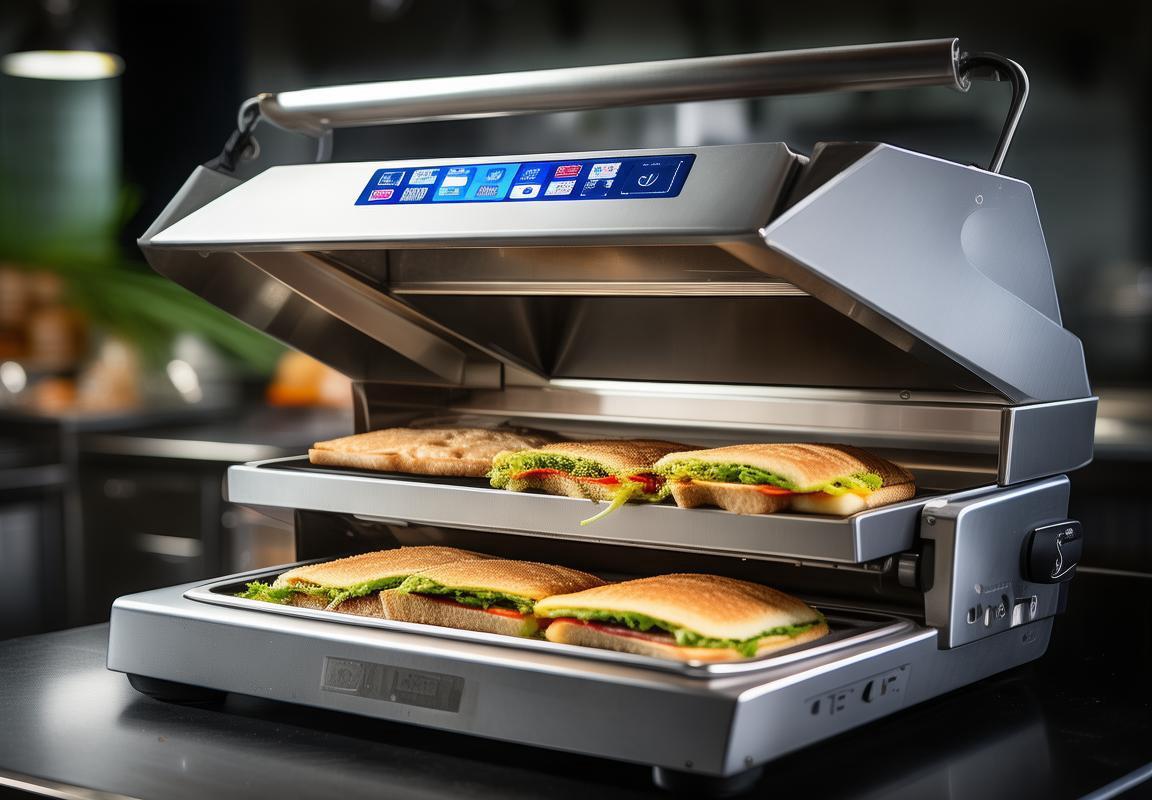
Consumer Preferences and Market Segmentation
In the ever-evolving landscape of the kitchen appliances market, consumer preferences and market segmentation play a pivotal role in shaping the demand for products like commercial sandwich presses. Understanding these dynamics is crucial for manufacturers and retailers to tailor their offerings to meet the needs of diverse customer bases.
The rise of health consciousness has led to a growing preference for healthier food options, including sandwiches. Consumers are increasingly looking for lighter, low-carb, and protein-rich alternatives to traditional sandwiches. This shift has prompted the development of specialized sandwich presses that cater to these dietary trends.
Gourmet and artisanal food enthusiasts are another segment that drives market segmentation. These consumers are willing to pay a premium for high-quality, unique ingredients and presentation. They seek sandwich presses that not only deliver consistent results but also enhance the aesthetic appeal of their creations.
The convenience factor cannot be overlooked. Busy professionals and families on the go are looking for appliances that can quickly prepare a meal. Compact, easy-to-use sandwich presses that can be easily stored and transported are becoming increasingly popular.
Food safety and hygiene are paramount concerns for many consumers. There’s a growing trend towards equipment that is easy to clean and maintain, reducing the risk of cross-contamination. Sandwich presses with non-stick surfaces and removable parts are gaining traction in the market.
Demographic factors also influence market segmentation. For instance, younger consumers, often referred to as millennials, are more likely to embrace technology-driven appliances. They appreciate features like digital controls and programmable settings that allow for greater customization.
Cultural diversity in the marketplace has led to the emergence of niche markets. Certain regions may have a higher demand for ethnic sandwich variations, which, in turn, necessitates specialized sandwich presses that can handle unique ingredients and cooking techniques.
Eco-conscious consumers are also a significant segment. They look for appliances that are energy-efficient and have a lower environmental impact. This preference is driving the development of sandwich presses that use less energy and are made from sustainable materials.
Retail channels also play a role in market segmentation. For instance, gourmet markets and specialty kitchen stores are likely to cater to a different customer base than large retail chains. The variety of sandwich presses available in these stores reflects the diverse preferences of their target demographics.
The rise of foodservice operations, both in traditional restaurants and in the burgeoning food truck industry, has created a demand for commercial sandwich presses that can withstand heavy use and offer consistent performance. These appliances are often built with durability in mind, featuring heavy-duty materials and robust construction.
In conclusion, consumer preferences and market segmentation in the commercial sandwich press industry are shaped by a myriad of factors, including health trends, gourmet preferences, convenience, food safety, demographic shifts, cultural diversity, eco-consciousness, retail channels, and the needs of foodservice operators. By understanding these dynamics, manufacturers and retailers can better align their products with the evolving demands of the market.
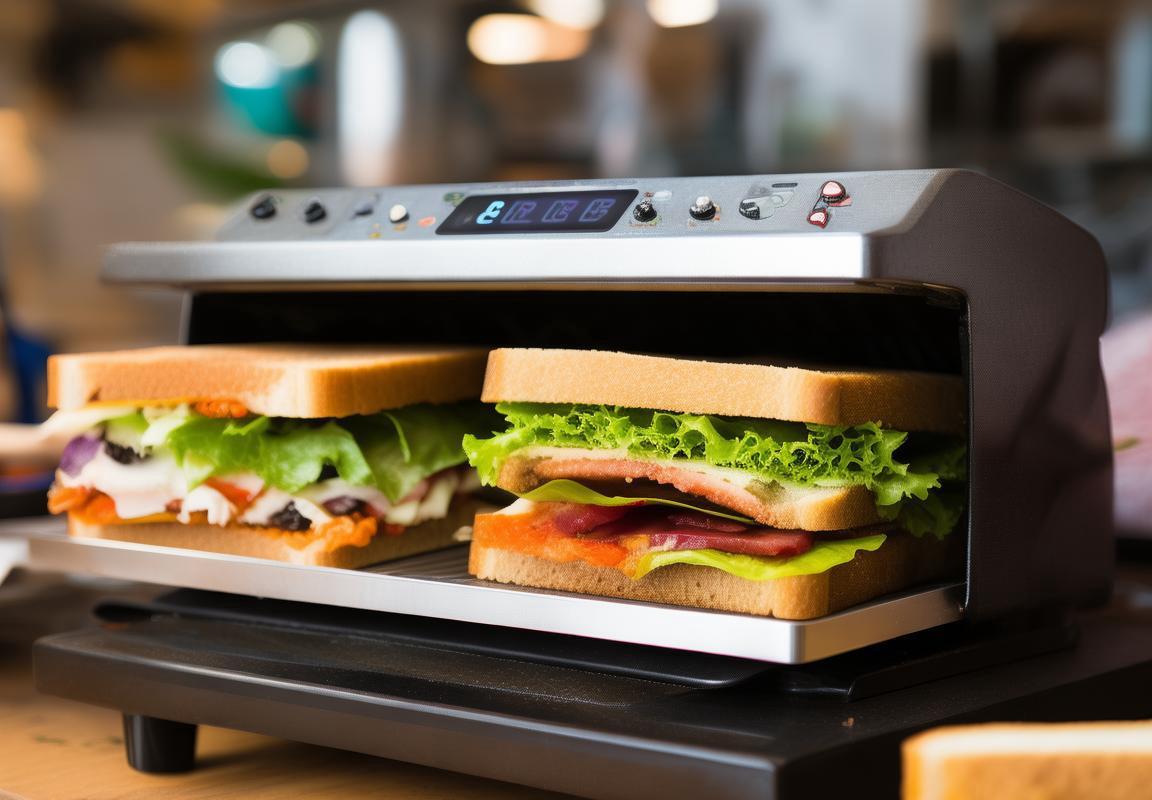
Comparative Analysis: NSF vs. Other Certifications
In the competitive landscape of commercial kitchen equipment, certifications play a pivotal role in ensuring quality, safety, and compliance. When it comes to sandwich presses, the NSF (National Sanitation Foundation) certification stands out as a benchmark for excellence. However, it’s essential to understand how NSF compares to other certifications in the market. Let’s delve into the nuances of this comparative analysis.
One of the primary reasons NSF certification is highly regarded is its rigorous testing and evaluation process. Unlike other certifications that may focus more on regulatory compliance, NSF goes beyond by examining the overall safety and performance of the product. This comprehensive approach means that a sandwich press with NSF certification has been tested for its ability to withstand high temperatures, ensure even heating, and prevent cross-contamination, which are crucial aspects for both food safety and customer satisfaction.
In contrast, other certifications like the UL (Underwriters Laboratories) or ETL (Intertek) primarily focus on electrical safety and compliance with local regulations. While these certifications are vital for ensuring that the equipment meets basic safety standards, they may not delve as deeply into the hygiene and operational aspects that are critical for commercial sandwich presses.
The NSF certification process also involves on-site audits to verify that the manufacturing process adheres to strict standards. This means that not only the final product but also the production environment must meet the high standards set by NSF. This level of oversight is often not part of the certification criteria for other organizations, which might result in a product that, while compliant with electrical and regulatory standards, may not have the same level of focus on food safety and durability.
Another key differentiator is the scope of products that can be NSF certified. While other certifications might be limited to specific types of equipment or regions, NSF certification is recognized globally. This international recognition is particularly important for companies that operate in multiple markets or are looking to expand their reach. A sandwich press with NSF certification can be confidently sold and used across borders, knowing that it meets the same stringent standards worldwide.
Consumer perception also plays a significant role in the value of certifications. NSF has been a trusted name in public health and safety for over 70 years, which means that when a product carries the NSF mark, it carries with it a level of trust and credibility. Consumers, especially in the foodservice industry, are increasingly seeking out products that have been certified by reputable organizations like NSF, as it signifies a commitment to quality and safety.
Furthermore, the NSF certification process encourages continuous improvement. Manufacturers are required to adhere to the latest industry standards and technologies, which means that over time, their products are likely to be more advanced and efficient. This focus on innovation and improvement sets NSF apart from other certifications that may be more static in nature.
In terms of market segmentation, the preference for NSF certified equipment can be seen across various segments of the foodservice industry. Fine dining establishments, fast-food chains, and even healthcare facilities all recognize the value of NSF certification. This segmentation reflects the broad appeal of the NSF mark and its ability to cater to diverse needs within the industry.
In conclusion, while other certifications have their place in the commercial kitchen equipment market, the NSF certification stands out for its comprehensive approach to safety, performance, and global recognition. The rigorous testing, on-site audits, and commitment to continuous improvement make NSF certified sandwich presses a preferred choice for those who demand the highest standards in food safety and quality. As the industry evolves, the importance of such certifications will only grow, ensuring that consumers can enjoy their sandwiches with the peace of mind that comes from knowing they are being served on equipment that meets the highest standards of excellence.
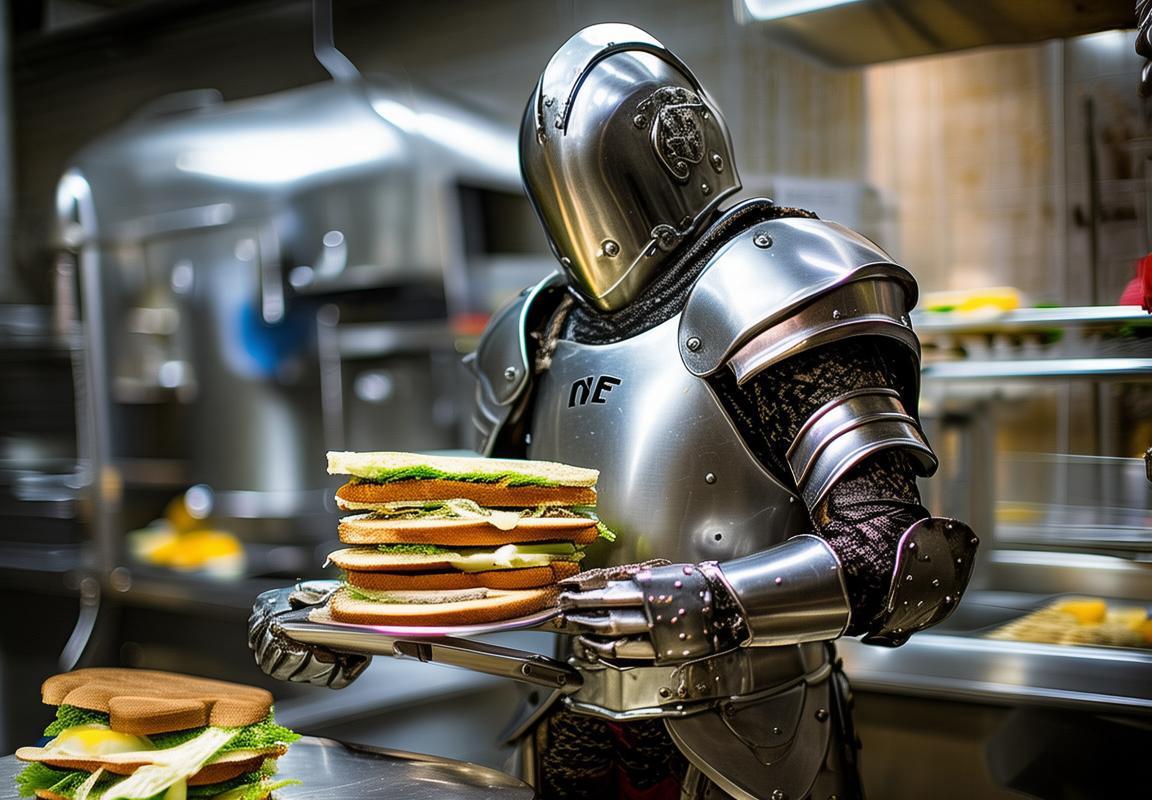
Challenges and Opportunities for Manufacturers
In the competitive landscape of kitchen appliance manufacturing, challenges and opportunities often go hand in hand. Navigating these complexities is crucial for companies looking to thrive in the industry. Here are some of the key challenges and opportunities that manufacturers face:
Manufacturers are under constant pressure to innovate and improve their products. Customers expect cutting-edge technology that not only enhances efficiency but also adds a touch of elegance to their kitchens. This demand for innovation can be a significant challenge, requiring substantial investment in research and development.
The rise of eco-friendly and sustainable products has become a major trend in the market. Consumers are increasingly conscious of their environmental footprint and are seeking appliances that align with their green values. This presents an opportunity for manufacturers to develop and market eco-friendly kitchen appliances, but it also requires a shift in production processes and materials sourcing.
Regulatory compliance is a non-negotiable for manufacturers. Ensuring that products meet safety standards and certifications like NSF can be daunting, especially when different countries have varying regulations. However, adhering to these standards can open up new markets and build trust with consumers, providing a clear competitive advantage.
The global supply chain has been disrupted by various factors, including trade wars and the COVID-19 pandemic. Manufacturers must navigate these disruptions to maintain inventory levels and production schedules. While this is a significant challenge, it also offers an opportunity to diversify supply chains and find more resilient partners.
The digital transformation of the industry is another challenge that manufacturers must embrace. Integrating smart technology into kitchen appliances is becoming more common, and consumers are expecting these features. This shift requires manufacturers to invest in new technologies and adapt their business models to include e-commerce and digital marketing.
Consumer preferences are rapidly evolving, with a growing demand for personalized and customizable products. Manufacturers that can offer tailored solutions to meet specific customer needs stand to gain a competitive edge. However, this requires a deep understanding of market trends and the ability to quickly adapt to changing consumer demands.
Energy efficiency is a key concern for consumers and regulatory bodies alike. As energy costs rise, manufacturers that produce energy-efficient appliances are likely to see increased demand. This presents an opportunity to develop products that not only save money for consumers but also contribute to a smaller carbon footprint.
The integration of kitchen appliances with smart home systems is becoming more prevalent. Manufacturers that can create appliances that seamlessly connect with other smart devices in a home can offer a more comprehensive solution to consumers. This integration can be challenging to achieve but has the potential to create a new level of convenience and control for users.
The competition for market share is fierce, with numerous brands vying for consumer attention. Manufacturers must differentiate their products through branding, marketing, and customer service. This challenge can lead to opportunities for strategic partnerships and collaborations that can enhance brand visibility and market reach.
Lastly, the rise of online reviews and social media has given consumers a powerful voice. Manufacturers must monitor these platforms to understand customer feedback and respond accordingly. This can be a challenge, but it also offers a chance to build a loyal customer base by addressing concerns and celebrating successes.
In summary, while the kitchen appliance manufacturing industry faces numerous challenges, these challenges also present a multitude of opportunities. By embracing innovation, sustainability, digital transformation, and a deep understanding of consumer needs, manufacturers can navigate the complexities of the market and position themselves for success.

Conclusion: Embracing NSF Standards for Quality and Safety
In the competitive landscape of the manufacturing industry, the adoption of stringent quality and safety standards is not just a regulatory requirement; it’s a strategic move that can open doors to new opportunities. Embracing NSF (National Sanitation Foundation) standards is a testament to a manufacturer’s commitment to excellence. Here’s how these standards not only ensure compliance but also foster growth and innovation.
Quality Assurance and Consumer TrustA manufacturer that opts for NSF certification is making a clear statement about the quality of its products. NSF standards are rigorous, covering everything from materials to manufacturing processes. This dedication to quality translates into increased consumer trust. When consumers see the NSF mark, they know that the product has undergone thorough testing and meets specific health and safety criteria.
Market Access and ExpansionThe NSF certification is globally recognized, which means that manufacturers can access international markets more easily. In regions where NSF standards are highly regarded, having this certification can be a significant advantage. It allows businesses to expand their customer base and tap into new markets where quality and safety are paramount.
Innovation and Continuous ImprovementNSF certification encourages manufacturers to innovate. The process of achieving certification often involves making improvements to existing products and processes. This drive for innovation can lead to the development of new features and technologies that can set a company apart from its competitors. It’s not just about meeting the current standards but about exceeding them.
Reduced Liability and Legal RisksBy adhering to NSF standards, manufacturers reduce their legal risks. Compliance with these stringent guidelines means fewer instances of product recalls or liability issues due to safety concerns. This peace of mind allows businesses to focus on growth and strategic planning rather than dealing with potential legal battles.
Enhanced Brand ReputationA company that invests in NSF certification is sending a powerful message about its brand. It communicates a commitment to health, safety, and environmental responsibility. This can significantly enhance the brand’s reputation, making it more attractive to both consumers and business partners.
Training and Employee EmpowermentThe process of obtaining NSF certification often requires comprehensive training for employees. This training not only ensures that the workforce is knowledgeable about the standards but also empowers them to contribute to the company’s quality and safety initiatives. Well-trained employees are more engaged and can help maintain high standards across the board.
Supply Chain ManagementNSF certification can extend beyond a single product to the entire supply chain. This holistic approach ensures that all components and materials meet the same high standards. A well-managed supply chain that adheres to NSF standards can lead to more reliable and consistent product quality.
Cost-Effective OperationsWhile the initial investment in NSF certification may seem significant, it can lead to cost savings in the long run. By implementing the necessary changes to meet these standards, manufacturers can reduce waste, improve efficiency, and avoid the costs associated with product failures and recalls.
Global Trends and Consumer ExpectationsAs the world becomes more health-conscious, consumer expectations for quality and safety have never been higher. Embracing NSF standards aligns with these global trends and helps manufacturers stay ahead of the curve. It’s not just about compliance; it’s about being proactive in meeting the needs and expectations of today’s consumers.
Long-Term Strategic PlanningFor manufacturers, NSF certification is a long-term strategic move. It’s not a quick fix or a temporary solution. It’s about building a sustainable business model that can withstand changes in the market and regulatory environment. By investing in NSF standards, manufacturers are positioning themselves for long-term success.
In conclusion, embracing NSF standards for quality and safety is not just a regulatory requirement; it’s a comprehensive approach to business that can lead to enhanced consumer trust, market access, innovation, and overall business growth. It’s a testament to a manufacturer’s dedication to excellence and a clear signal to the market that they are committed to delivering products that meet the highest standards of quality and safety.